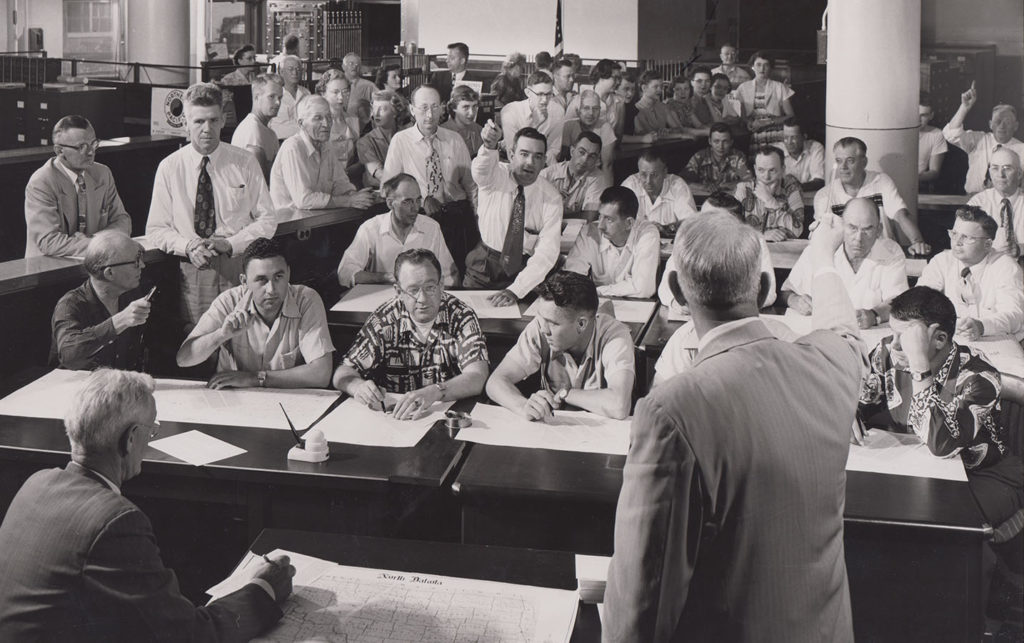On Thursday, April 5, 1951, the Amerada Petroleum Company of Tulsa, Oklahoma completed a 17-hour test of an oil well on the Clarence Iverson farm near Tioga, North Dakota. The well produced 307 barrels of 44 gravity oil and around 5 million cubic feet of gas. The company described the find as ‘commercial.’
After the Depression, the Bank of North Dakota worked hard to divest itself of the farm lands it had acquired through foreclosure during the crisis of the Depression and Dust Bowl. By 1950, only a few dozen of the 6,360 farms the Bank held title to in 1940 were still in its delinquent portfolio.
The 1939 Legislature voted to keep 5 percent of the mineral rights on the foreclosed land upon sale and increased it to 50 percent four years later. By keeping this significant percentage of the mineral rights on the lands it had acquired during the desperate years, however, the Bank laid the foundation for decades of more ample revenues during the second half of the 20th Century, when oil became a significant source of North Dakota economic activity.
The Bank held a mineral rights auction for land in Tioga in its lobby August 8, 1951. The rights sold for $28 per acre.


